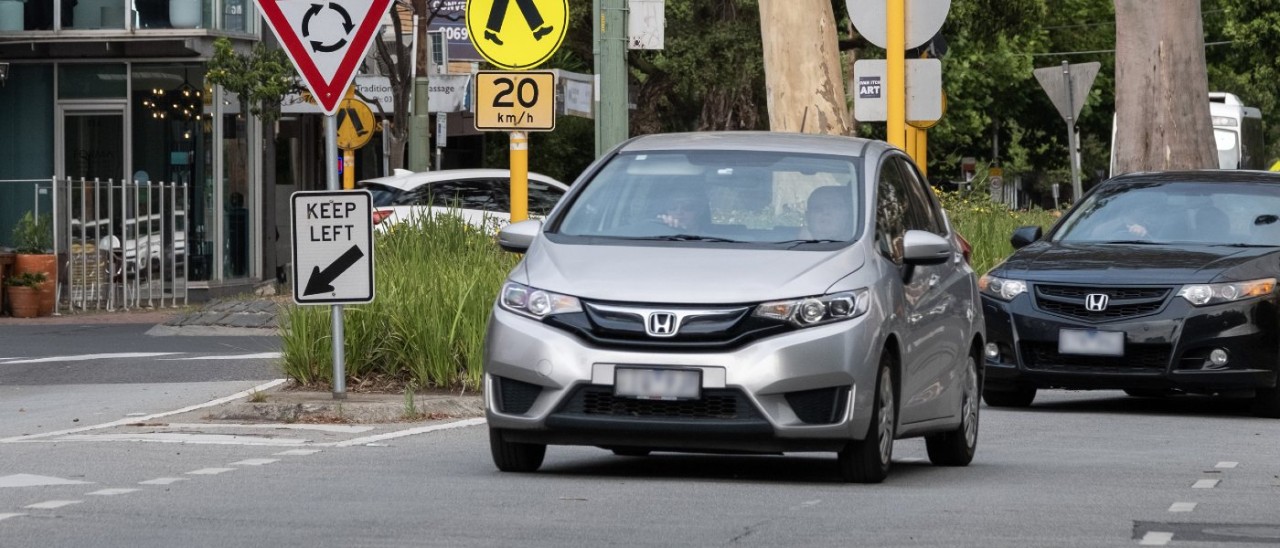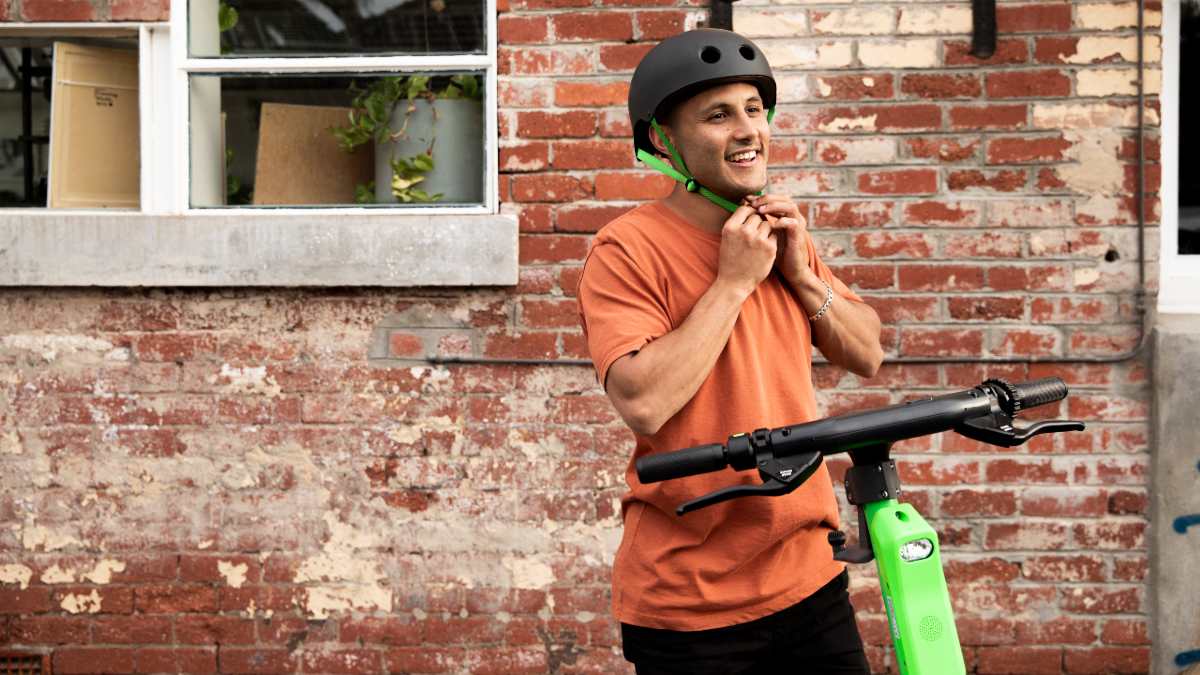Discover key insights on Victoria’s West Gate Tunnel, including essential facts, toll details, and travel benefits for drivers.
The most misunderstood road rules in Victoria

From U-turns to passing stationary trams, here are some of the most misunderstood road rules in Victoria. Road laws are constantly being reviewed and updated, so it's important to keep up to date.
Even if you’ve been driving for 20 years without incident and never made a car insurance claim, you might not be as clear about Victorian road rules as you might think.
New road rules are added regularly, while old rules can be updated. For example, RACV successfully campaigned for the Victorian government to update Road Rule 79A to help protect emergency roadside assistance workers, tow truck drivers and their customers - in addition to police and first responders.
From 1 July 2025, drivers on Victorian roads will need to slow down to 40km/h per hour when passing or overtaking stationary or slow-moving roadside assistance, accident towing, breakdown towing, and all incident response service vehicles displaying a flashing blue, red, magenta or yellow light.
This is an expansion of Victorian Road Rule 79A, first introduced in 1 July 2017, that mandates drivers slow down to 40km/h when approaching and passing any slow-moving or stationary police, emergency, enforcement, or escort vehicles displaying flashing red, blue, magenta or yellow lights or sounding an alarm.
Here are some of the road rules and regulations that have been known to confuse even the most experienced drivers.
The most misunderstood road rules
Roundabouts
What you’re doing wrong
Only giving way on the right and not indicating.
What’s the rule?
Give way to any vehicle already in the roundabout, as well as any trams entering or approaching the roundabout. In most cases, those vehicles already in the roundabout will be on your right. However, in some cases, such as smaller roundabouts, vehicles that have entered to the left or on the opposite side of the roundabout may mean you cannot safely enter and have to give way, as they are already in the roundabout. You also should indicate as you leave the roundabout, if practical. On multi-lane roundabouts, cyclists in the far left-lane of the roundabout need to give way to any vehicle leaving the roundabout. Finally, pedestrians should give way to vehicles at a roundabout, unless there is a pedestrian crossing.
Indicating at a roundabout
Before entering, indicate as you normally would – left to turn left, right to turn right, no indicator if you’re going straight. When you exit the roundabout, indicate left if practicable. If you’re leaving the roundabout more than halfway around, indicate right. Halfway around is defined as leaving on a road that is substantially straight head from the road you entered on.
Is overtaking allowed in a roundabout?
It’s allowed, but only when line marking permits it, and it’s safe to do so. Remember to indicate as you normally would and allow enough distance to avoid collision or obstruction to other vehicles.
Giving way
What you’re doing wrong
Arriving at an intersection at the same time as an oncoming car and not knowing who has to give way.
What’s the rule?
You should always obey stop or give way signs or lines at intersections. In addition to that, vehicles turning right must give way. This applies even if you both have ‘give way’ or ‘stop’ signs – the car turning left at a give way sign has priority over the car turning right.
Giving way to an emergency vehicle
Sometimes it can be difficult to hear alarms from a distance, so it’s important to keep an eye on your mirrors and know what’s happening around you. You will need to slow down to 40km/h when driving past stationary or slow-moving emergency or enforcement vehicles with flashing red, blue or magenta lights, or if they are sounding an alarm.
If you’re in the path of an emergency vehicle displaying flashing red or blue lights or sounding an alarm move out of its path as soon as you can do so safely. If you’re stopped, remain stationary until it's safe to proceed. This rule applies despite any other rule that would otherwise require a driver of a police or emergency vehicle to give way to you.
Turning onto a multi-lane road
What you’re doing wrong
Leaving your lane.
What’s the rule?
When turning onto a multi-lane road you must follow any line markings indicating how the turn is to be made. If there are no line markings, you can turn into any lane, however, it’s usually safest to stay in the same lane and change lanes once you’ve made the turn.
Merging
What you’re doing wrong
Not giving way when you’re supposed to.
What’s the rule?
There are two different rules depending on the line markings, but drivers should show courtesy regardless of the lines on the road. A ‘zip-merge’ occurs when two lanes of traffic join and there’s no dashed line in between. Here, the vehicle in front would go first, regardless of whether they’re on the left or right. Where the vehicles cross a dashed line, like on a freeway entry ramp, the vehicle crossing the line must give way to cars already in the lane.
E-scooters
What you’re doing wrong
- using an e-scooter that does not meet required specs
- riding an e-scooter too fast
- riding an e-scooter under the influence of alcohol or drugs
- riding an e-scooter without a helmet.
- carrying a passenger
What are the rules?
Specifications for e-scooters
To comply with the specifications set out in the Victorian Road Rules, an e-scooter ridden on public land must:
- have a maximum speed of 25km/h on level ground
- have a maximum weight of 45kg
- be designed for one rider (either standing or seated)
- has two wheels
- has a footboard between the two wheels
- is steered by a handlebar
Speed limit for e-scooters
Even though e-scooters with a maximum speed of 25km/h are permitted, riders must not exceed 20km/h, either on the road or shared-use path.
Alcohol limits for e-scooters
The same rules that apply to drivers apply to e-scooter riders in Victoria. You cannot ride while under the influence of drugs or alcohol. All riders must have a Blood Alcohol Concentration (BAC) below the legal limit, which is 0.05 for riders with a full driver licence, and 0.00 for riders on Ls, Ps, or underage. Penalities include losing your car licence, heavy fines, an alcohol interlock, and referral to a behaviour change program.
Helmet rules for e-scooters
Helmets must be worn at all times while riding an e-scooter. Failure to wear a helmet can result in a fine.
Riding lanes and paths for e-scooters
Private e-scooters and e-scooters that are part of the share scheme can be ridden in bicycle lanes and shared paths, and on roads where the speed limit doesn't exceed 60km/h. E-scooters must not be used on footpaths - fines apply. E-scooter riders must also obey the same road rules that apply to motor vehicles and cyclists such as giving way, obeying traffic lights, signs and speed limits.
E-scooter rider restrictions
E-scooters are limited to one rider. Fines apply if two or more people share an e-scooter. It's also prohibited for two scooter riders to travel side by side.
You cannot carry an animal on an e-scooter or tether an animal to an e-scooter.
While you may need to use your phone to find an e-scooter, your phone must be put away once your journey begins. Penalities apply if you use a mobile device while operating an e-scooter.
Visit Transport Victoria for more information on riding e-scooters.

U-turns
What you’re doing wrong
Not knowing when or when not to give way.
What’s the rule?
Drivers making a U-turn must give way to everyone else, including pedestrians, regardless if other vehicles are at a give way or stop sign.
Be careful if driving interstate, however. U-turns are permitted at most intersections in Victoria unless signs indicate otherwise (or you’re crossing an unbroken line, median strip etc). The opposite is true in all other states and territories, meaning at intersections without traffic lights or at breaks in the centre island of the road, you must not do a U-turn if there is a no U-turn sign. You may not make a U-turn at intersections with traffic lights, unless there’s a ‘U-turn permitted’ sign.
Reversing out of driveways
What you’re doing wrong
Probably nothing. Among the stream of queries and questions RACV receives, every so often someone will write in insisting that it’s illegal to reverse out of a driveway.
What’s the rule?
This one is a bit of an anomaly. Simply stated: it’s not a road rule. Drivers are permitted to reverse out of a driveway. When doing so they must give way to pedestrians, and when vision is impeded drivers are allowed to use their horn to alert pedestrians and other drivers of the position of the vehicle.
Passing a stationary tram
What you’re doing wrong
Most of us know we must stop when a tram stops, with the car level with the rear of the tram to allow passengers to get on and off safely. But what about if there are no passengers about; is it okay to creep forward alongside the stationary tram?
What’s the rule?
Whether drivers need to stop before passing depends on whether or not the tram is stopped at a safety zone. A safety zone is an area of the road at or near a tram stop with safety zone signs and a traffic island or dividing strip. If a tram is stopped in a safety zone, a driver must drive to the left of the safety zone at a speed that is safe for pedestrians who may be crossing the road.
If the tram is stationed at a tram stop without a safety zone, a driver must always stop before passing the rear of the tram. You cannot pass the tram while the tram doors are open, even if there are no passengers entering or exiting the tram. Once the doors have closed and there are no pedestrians crossing the road, you can drive past the tram at 10km/h or slower. These rules apply to all road users, including cyclists.
A good rule of thumb is to proceed with caution.
Yellow lights
What you’re doing wrong
Speeding up to travel through the intersection before the red light.
What’s the rule?
Motorists should stop at a yellow light unless it is unsafe to do so. The only reason you should not stop at a yellow light is if you are so close to the intersection that braking is likely to either cause an accident, or cause you to come to a stop in the middle of the intersection.
Hook turns
What you’re doing wrong
Not waiting for the green light before turning.
What’s the rule?
Hook turns can be confusing to motorists visiting Melbourne, but even lifelong residents perform hook turns incorrectly without even realising.
Commonly, drivers performing hook turns enter an intersection and wait until there is no oncoming traffic before turning right. This is incorrect.
Instead, drivers waiting in an intersection to complete a hook turn should wait until the traffic lights on the road they are entering (i.e. turning right into) change to green before completing the turn. Be sure to check for traffic before proceeding.
The information provided is general advice only. Before making any decisions please consider your own circumstances and the Product Disclosure Statement and Target Market Determinations. For copies, visit racv.com.au. As distributor, RACV Insurance Services Pty Ltd AFS Licence No. 230039 receives commission for each policy sold or renewed. Product issued by Insurance Manufacturers of Australia Pty Ltd ABN 93 004 208 084 AFS Licence No. 227678.


